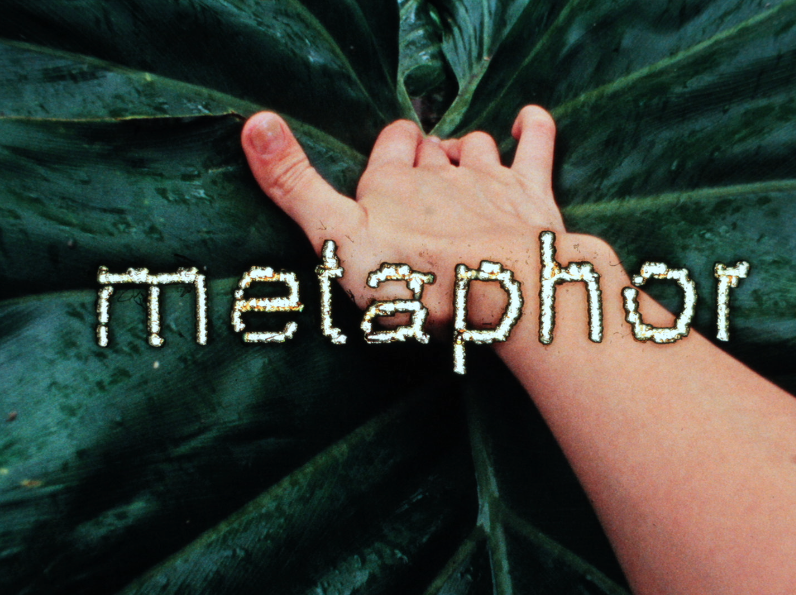Thursday, February 17, 6:00 p.m.

Nazlı Dinçel’s handmade films reflect on experiences of physical and cultural disruption, from intimate states of arousal to Dinçel’s own immigration from Turkey to the United States. By scratching, sewing, letter-punching, and hand-developing, they draw comparisons between the sensuous physicality of film and the body. Dinçel will present a selection of works, including Between Relating and Use (2018), Shape of a Surface (2017), Solitary Acts (4, 5, 6) (2015), and Instructions on How to Make a Film (2018), along with the rarely screened video Untitled (2016), and discuss their practice.
2015–18, USA, Turkey, Argentina, ca 66 minutes plus discussion
16mm and digital video
In English
Presented in partnership with Video Data Bank.
—
PROGRAM
Between Relating and Use, 2018, 16mm, 9 minutes
Borrowing words from Laura Mark’s “Transnational Object” and DW Winnicott’s “Transitional Object”, this film is an attempt to ethically make work in a foreign land. Transitioning from assuming the position of an ethnographer, we turn and explore inwards – on how we use our lovers.
Shape of a Surface, 2017, 16mm, 9 minutes
The ground holds accounts of once pagan, then christian and now muslim ruins of the city built for Aphrodite. As she takes revenge on Narcissus, mirrors reveal what is seen and surfaces, limbs dismantle and marble turns flesh.
Solitary Acts #4, 2015, 16mm, 8 minutes
The filmmaker films herself masturbate the object of debate. She hears others claim her body, her habits: those in her conservative surroundings as a child. The viewer claims her as well, by watching her in this private act. She is 9 years old, then 12. She observes popular icons, dismissing the agency of their body: with some teenage angst, denies climax to everyone else but herself.
Solitary Acts #5, 2015, 15mm, 5.5 minutes
The filmmaker films herself practice kissing with a mirror. She recalls teenage memories of overconsumption, confusing oral fixations (kissing and eating). She ends up eating the carrot she is masturbating with, and she feels a sense of cannibalism. The components of the background of the scene are broken down and filmed in extreme closeups. These wave and play with one another: when text over-consumes the image it transforms into the backdrop fabric where the filmmaker physically attaches the film together with fishing line.
Solitary Acts #6, 2015, 16mm, 11 minutes
This is a feminist critique of the Oedipal complex. The filmmaker recounts an abortion she had in 2009. The aborted child survives and becomes her lover. Her subject is filmed in a private act, complicating what could be an act of the solitary. There are three parts in the film. First is a recount of the child’s earliest sexual memory, similar to the filmmaker’s in Solitary Acts #4. The text is hammered on the film with letter punches. Second is a letter written to the filmmaker from her subject, being read by the filmmaker. The image is punched out with a leather puncher and carefully replaced into black leader with tweezers. A pop song from 2009 is used, the one the filmmaker heard while driving in the taxi from her abortion. Third is a letter that the filmmaker wrote, being read by the subject. In this third part the audio is broken apart and the letter is reversed, mimicking the reverse masturbation (the image).
Untitled, 2016, video, 12 minutes
Instructions on How to Make a Film, 2018, 16mm, 13 minutes
Shot at the Film Farm in Mt. Forest, this comedy is a quest about performance, educational voiceover, analogue filmmaking, ASCII, language, ethics of ethnography and narrative storytelling under a metaphor of instructions to farm land. Text by Barbara Kirshenblatt-Gimblett and Wikihow/shoot-film.
—
ABOUT
Born in Ankara, Turkey, the artist and filmmaker Nazlı Dinçel currently resides in Milwaukee. While they are known for their films, they work across a number of mediums, drawing inspiration from Turkish weaving and rug making. Their work has been exhibited internationally, including at the Museum of Modern Art in New York, Walker Art Center in Minneapolis, International Film Festival Rotterdam, Hong Kong International Film Festival, and Buenos Aires International Film Festival, among many others. In addition to their art practice, Dinçel is building an artist-run film laboratory, part of a global network of collectives dedicated to exploring the possibilities of analog filmmaking in the wake of the photochemical film industry’s collapse.